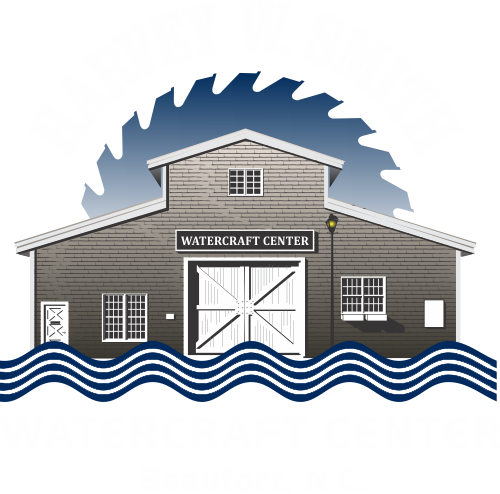
There’s a long tradition of craftsmanship in custom boat building in North Carolina. But, you don’t have to look further than Front Street in Beaufort to see where that tradition continues.
A jewel at the center of Beaufort’s maritime culture, the Harvey W. Smith Watercraft Center serves as an important economic force at the North Carolina Maritime Museum by showcasing the art and skill of traditional boat building. The museum’s Watercraft Center sits on Taylor’s Creek, across from the Museum. There’s no better place to learn boat building than on the water.
The Harvey W. Watercraft Center carries on the rich boat building heritage of the North Carolina coast through wooden boat building courses. These courses bring together participants of all ages from different parts of the country with “a common thread of creativity.”
Scheduled boat-building courses and registration links are posted online.
Introduction to Wooden Boat Building Course
The introductory wooden boatbuilding class provides hands-on experience with fundamental boatbuilding concepts. The course teaches students to select wood, design a boat, and use various techniques like steam bending, planking (carvel or lapstrake), and fastening to construct a small boat. The curriculum covers basic design, essential tools, safe workshop practices, and the properties of wood, culminating in a small project that builds confidence for independent boatbuilding
Build a Boat-in-a-Day
Participants in this introductory workshop use pre-cut kits to construct a small, flat-bottomed plywood boat in a single session. The course focuses on teaching basic woodworking and assembly skills. The class is designed for beginners and is a collaborative effort for families or small teams. Each participating team assembles a small flat-bottomed plywood boat suitable for paddling. The boat is 12 feet long, 32 inches wide, and weighs about 40 pounds. Each boat will be completed to a watertight condition and ready to take home for paint or varnish.
Lofting a boat
The boatbuilding class teaches how to create full-size, scaled-up plans for a six-foot boat using a traditional process called lofting. Students will learn to transfer a boat’s design from a boat plan and draw it out in full scale, the first critical steps for creating templates and building a boat.
Introduction to Woodworking
The new Introduction to Woodworking class teaches beginners to safely and efficiently use hand and power tools, understand different wood types and their properties, and apply fundamental techniques like cutting, shaping, joining, and finishing to build a small project. The course focuses on building foundational skills, with instructor demonstrations and supervised hands-on practice, to instill confidence and a solid understanding for future woodworking projects.
Half Hull Model Class
Half hull models serve as traditional methods to visualize, plan, and understand a vessel’s three-dimensional design and proportions. This half hull model class teaches participants to create a scale, half-side replica of a North Carolina Shad boat’s hull. Classes provide hands-on woodworking experience by teaching techniques like transferring boat plans, cutting laminated “lifts” of wood, and carving the hull into its final shape, resulting in a finished model ready to take home for paint or varnish.
Family Model Boat Class
Designed for children but with adult participation, each team will assemble and decorate a model boat under the supervision of experienced boat builders and model makers. Teams are limited to a maximum of four people, at least one of whom must be an adult. Minimum age is 8 years old.

